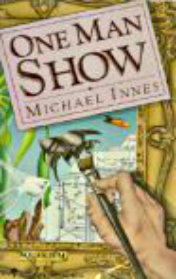
Review by Bon S. (bons)
I have chosen this title THE KILLER ANGELS by Michael Shaara to review for several reasons. First, it is available to order by anyone reading this article in PaperBackSwap.
It has been printed in hardcover, paperback/trade, mass market and audio cassette.
The book itself is a sure winner, being an account of the Battle of Gettysburg on July 1863 and for any American historian of the Civil War, (also known as the War Between the States), it is the story, in novel form, of probably one the most famous battles fought in that war.
Another important reason for this book review is it is a Pulitzer Prize winner, plus his book was selected as number one in the book The Leader’s Bookshelf, of which over 200 current and retired military people selected as the most important 50 books they selected to read, which was written and compiled by (Ret.) Admiral Stavridis, USN, and R. Manning Ancell.
On the same site, President Lincoln stood before hundreds of citizens on a cold winter day on November 19, 1863. only five months after that battle, to deliver his Gettysburg Address.
That speech took only 20 minutes and it was said that the people stood in awe, no clapping of hands, no applause of any kind or like recognition… just silence from listening to those 96 words. Lincoln thought he had failed. Yet in reality that speech will live forever as one of the greatest of all.
Michael Shaara’s book captures the essence of those few days of battle and death. He found and retrieved journals and letters of the original words of soldiers. Those who fought their brothers and cousins and died with over 20,000 other soldiers, from both North and South.
He relied on personal letters from non published accounts in journals or printed newspapers. He did not use already researched or published academic studies, or historians points of view. You will find no index, suggested reading list or bibliography in this book.
Shaara’s book is a novel, presented to the readers as the voices of the Confederate side. Loud and clear General Robert E. Lee and his band of generals spoke. In the back of this novel, you will find a afterword and list of the principle Southern military personnel who served the South. Reviewers of this book have stated it is a re-capture of the emotional experiences of the thoughts and actions this battle presented. It is pain revealed, danger and death experienced, and how the men of Lee’s brigades and companies of thousands of men worshiped the man Robert E. Lee.
No one can accurately pin point what the American Civil War was about. Many theories, many studies, with thousands of books written on its behalf, and yet in the 21st century we have an author who seems to know how to write of the personal feelings and present his theories, leaving a final conclusion to test America’s viewing of this conflict.
He somehow has explained the impossible and it is believed the words he has spoken have come from the heart. He seems to get inside the heads of the Confederate Army and speaks for the dead soldiers and that lost cause.
Other famous authors of today read this book and cried, others are studying it still, many keep thinking about it and often we have, from a novel, a recreation of a few days in Gettysburg, PA 154 years ago.
Their testimonies are recorded on the dust jacket flaps of this book.
So on those hot July days the battle raged on and history was made. Our minds are transformed from his novel to what this battle and war was all about or what we think it was all about.
Killer Angels helped us to entertain new opinions, different ideas, and even books written 100 years apart from each other of the actual scenes and style of when that event took place.
Michael Shaara’s book reveals the daily and hourly details of those few days of this famous battle and the reason why that battle was fought.
Remember something about this author…he is not a first time writer. He has been around for awhile with his story For the Love of the Game, his great baseball novel, which later was made into a movie.That novel stirred our hearts for America’s pastime. He now has claim to four novels. The others are The Herald and The Soldier Boy, so check him out in PaperBackSwap.







